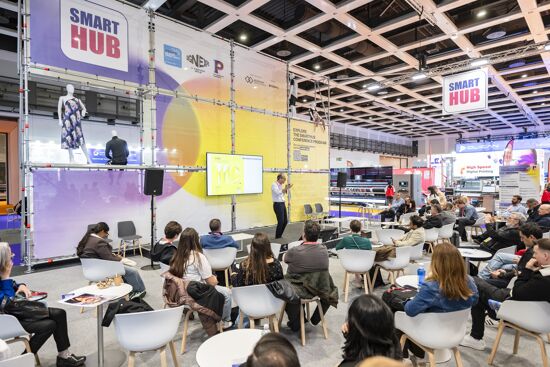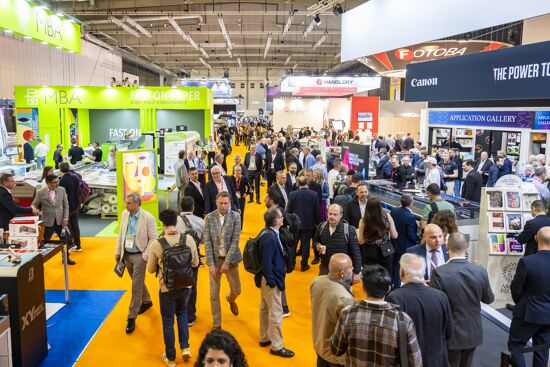Need to boost employee productivity? Add some fresh air

Improved indoor air quality can boost the cognitive function of people working inside buildings, according to a new study from Syracuse University, US.
There are many ways printers and publishers can improve staff productivity, some more expensive than others. But if you’ve already exhausted the possibilities of dress down Fridays and booze-it-up Wednesdays, try opening the windows and see if it makes a difference to how well people do their jobs.
According to a study in the US, managing the office ventilation can have a positive effect on staff productivity. This recently published work from Syracuse University in New York, finds that if you work in an unpolluted environment with proper ventilation, your cognitive abilities improve.
The study monitored 24 people under three different environmental conditions and at the end of each day measured their responses to nine tests. Researchers exposed people to different environments: one with an artificially high amounts of CO2 , a conventional office environment with fairly high concentrations of Volatile Organic Compounds (VOCs), a green one with low VOCs and one with low VOCs plus enhanced ventilation, dubbed Green+.
It seems that indoor air quality has a profound effect on cognitive function, so improving it could boost people’s performance. Such ills as Sick Building Syndrome, which are due to high VOCs, CO2, chemicals and the like in the air, can be mitigated by opening windows from time to time. This may sound silly, but it is easy to appreciate how stale atmospheres can develop, especially in buildings that have been rigorously insulated against the weather.
Peoples’ cognitive performance was measured every day and not surprisingly the Green+ environment produced the most impressive improvements. What’s most interesting about the Syracuse study is the extremity of the results. For instance, the Crisis responses of people in the Green+ environment were 131% better than those of the control group.
Those in the Green + group also had 288% better strategic thinking. In the Green environment with low VOCs, group responses were 97% and 183% better respectively. The effect of an environment with high concentrations of CO2 was also malign, with reduced cognitive function in seven of the nine areas the researchers tested.
Researchers wanted to look at the impact of ventilation, chemicals, and carbon dioxide on workers’ cognitive function because, as buildings have become more energy efficient, they have also become more airtight, increasing the potential for poor indoor environmental quality.
Building-related illnesses and “sick building syndrome” were first reported in the 1980s as ventilation rates decreased. In response, there has been an emphasis on sustainable design—“green” buildings that are energy efficient and are also designed to enhance indoor environmental quality. The researchers designed this study to identify the specific attributes of green building design that influence cognitive function, an objective measure of productivity.
Other research also has found a reduction in work performance and more reports of headaches, fatigue and nose, eye and throat symptoms in office and school environments with relatively low ventilation rates, said Mark Mendell, an affiliate staff scientist at Lawrence Berkeley National Laboratory near Berkeley, Calif., who wasn’t involved with the latest study.
And even when ventilation rates are adequate, increasing carbon dioxide levels can lead to decreased performance on decision-making tests, Dr. Mendell found in a 2012 study that included 22 participants. Carbon dioxide levels indoors are mainly affected by two things: the number of people in a room and how quickly the ventilation system is removing it, he said.
Opening office windows and letting in some fresh air is a good thing for people’s productivity. A few drafts whistling around your offices will be beneficial to business performance. So breath deep that outside air, even if it means putting up with whining from those who prefer working subpar in an unhealthy hothouse.
Topics
Interested in joining our community?
Enquire today about joining your local FESPA Association or FESPA Direct
Recent news

Industry Experts Explore the Evolution of Smart Manufacturing in the Textile Industry
A FESPA SmartHUB roundtable at Personalisation Experience 2025 discussed smart manufacturing's transformative impact on the textile industry. Experts highlighted the shift to on-demand customisation, driven by digital printing, data analytics, and automation. Key takeaways included enhanced machine control, significant waste reduction through intelligent software and colour management, and improved sustainability via energy efficiency and near-shoring, ensuring agility and environmental responsibility in textile production.

FESPA 2025 gathers leading visionaries from across the speciality print industry in Berlin
FESPA Global Print Expo 2025, European Sign Expo and Personalisation Experience (6 – 9 May 2025, Messe Berlin, Germany) welcomed Visionaries from across the speciality print industry to shape the future of print, develop forward-thinking business strategies, and explore innovative ways to translate emerging industry trends into tangible growth opportunities.

Exploring Cutting-Edge Textile Printing Innovation with Adobe Print Engine 7
Adobe PDF Print Engine 7, launched at FESPA Global Print 2025, significantly advances textile printing. Debbie McKeegan shares how it automates non-white substrate management and RGB colour handling, expands colour gamuts with in-RIP multicolour transparency blending, and streamlines workflows for efficiency and sustainability. This update boosts customisation, reduces waste, and positions businesses at the forefront of digital print innovation.

FESPA Global Print Expo 2025 - Overall Highlights
FESPA Global Print Expo, Europe's leading print and signage exhibition returned to Messe Berlin from 6 - 9 May 2025.